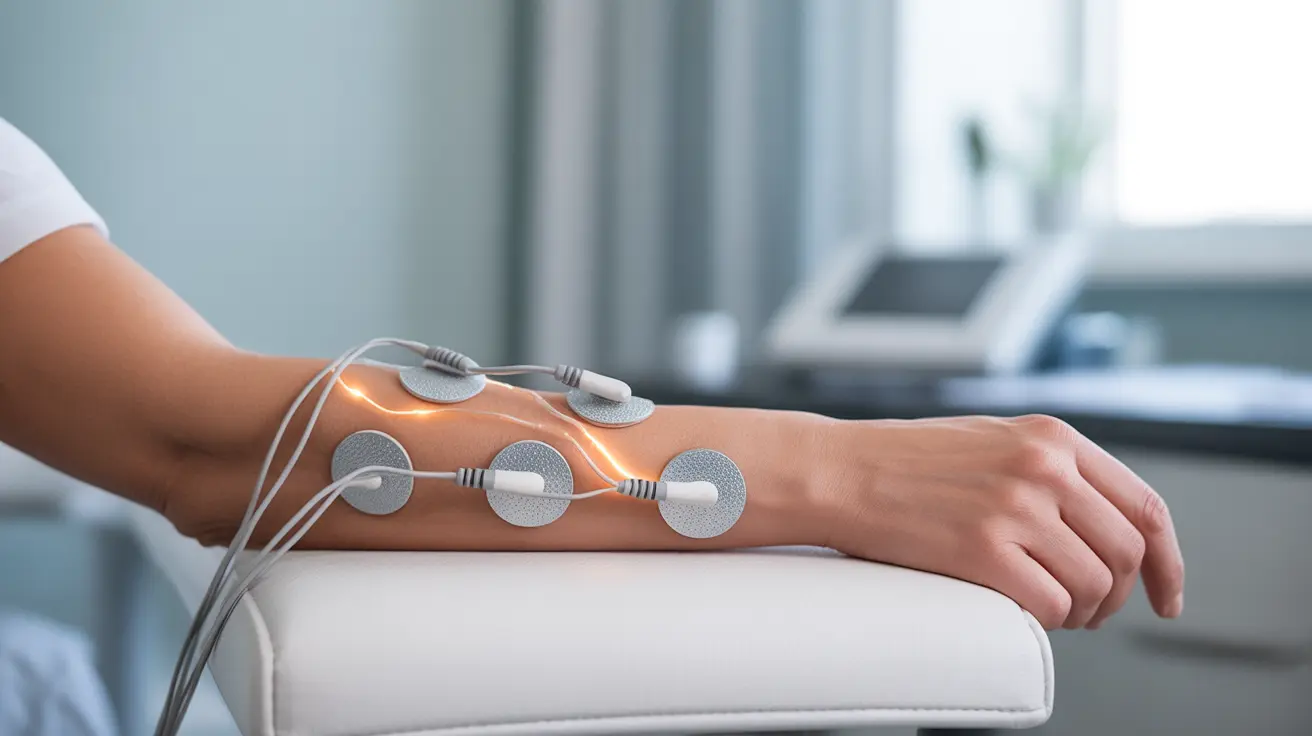Electrical stimulation therapy, commonly known as e stim, has emerged as a popular non-invasive treatment option for managing various types of pain and promoting healing. This innovative approach uses controlled electrical impulses to target specific areas of the body, offering relief for millions of people dealing with chronic pain, muscle weakness, and rehabilitation needs.
As healthcare providers increasingly recognize the benefits of drug-free pain management alternatives, e stim therapy has gained significant attention for its versatility and effectiveness. Understanding how this technology works and whether it might be right for you can help you make informed decisions about your pain management strategy.
Understanding How E Stim Therapy Works
E stim therapy operates on the principle of delivering controlled electrical pulses through electrodes placed on the skin. These gentle electrical signals interact with your nervous system in several ways, primarily by interrupting pain signals before they reach the brain and stimulating the release of endorphins, your body's natural pain-relieving chemicals.
The electrical impulses work according to the gate control theory of pain, which suggests that non-painful sensations can override painful ones when they travel along the same nerve pathways. When e stim devices send these electrical signals through your skin, they essentially "close the gate" on pain signals, preventing them from reaching your brain and registering as discomfort.
Additionally, electrical stimulation can promote blood circulation in the treated area, reduce inflammation, and encourage muscle contraction and relaxation. This multi-faceted approach makes e stim an effective tool for both immediate pain relief and long-term healing support.
TENS vs EMS: Key Differences in E Stim Technology
Two primary types of electrical stimulation devices dominate the market: TENS (Transcutaneous Electrical Nerve Stimulation) and EMS (Electrical Muscle Stimulation) units. While both use electrical impulses, they serve different therapeutic purposes and target different physiological systems.
TENS Units for Pain Management
TENS devices focus specifically on pain relief by targeting sensory nerves. These units deliver low-intensity electrical pulses that create a tingling or buzzing sensation, effectively masking pain signals. TENS therapy is particularly effective for chronic pain conditions, arthritis, and post-surgical discomfort.
The electrical frequencies used in TENS units typically range from 1 to 100 Hz, with different frequencies providing varying benefits. Low frequencies (1-10 Hz) tend to stimulate endorphin release, while higher frequencies (50-100 Hz) work more directly on nerve signal interruption.
EMS Units for Muscle Stimulation
EMS devices target motor nerves to cause muscle contractions, making them ideal for muscle strengthening, rehabilitation, and preventing muscle atrophy. These units deliver stronger electrical impulses than TENS devices, as they need sufficient power to activate muscle fibers.
Physical therapists and athletes commonly use EMS therapy to maintain muscle tone during periods of immobilization, enhance muscle strength, and accelerate recovery after intense training or injury.
Treatment Duration and Frequency Guidelines
The optimal duration and frequency of e stim therapy sessions depend on your specific condition, treatment goals, and the type of device being used. Most healthcare professionals recommend starting with shorter sessions and gradually increasing duration as your body adapts to the treatment.
For TENS therapy, typical sessions last between 15 to 30 minutes, and many people use their devices 2 to 3 times daily. Some individuals with chronic pain conditions may benefit from longer sessions or more frequent use throughout the day, but it's essential to follow your healthcare provider's recommendations.
EMS therapy sessions are generally shorter, typically lasting 10 to 20 minutes per muscle group. The frequency of EMS treatments varies based on your fitness goals and current condition, with most programs recommending 3 to 5 sessions per week for optimal results.
Consistency plays a crucial role in achieving the best outcomes with e stim therapy. Regular, appropriately timed sessions tend to provide more sustained benefits than sporadic, intensive treatments.
Safety Considerations and Contraindications
While e stim therapy is generally safe for most people, certain conditions and circumstances require caution or complete avoidance of electrical stimulation treatments. Understanding these safety considerations is crucial for preventing complications and ensuring effective treatment.
Who Should Avoid E Stim Therapy
People with pacemakers or other implanted electronic devices should not use e stim therapy, as the electrical impulses could interfere with these life-saving devices. Pregnant women should also avoid electrical stimulation, particularly over the abdomen and lower back, due to potential risks to the developing fetus.
Individuals with certain heart conditions, epilepsy, or a history of seizures should consult their healthcare provider before beginning e stim therapy. Additionally, people with decreased sensation or numbness in the treatment area may not be suitable candidates, as they cannot adequately assess the intensity of electrical stimulation.
Essential Safety Precautions
Always ensure your skin is clean and dry before applying electrodes, and never place electrodes over broken skin, wounds, or areas of infection. Avoid placing electrodes directly over the heart, across the chest, over the eyes, or on the front or sides of the neck.
Start with the lowest intensity setting and gradually increase to a comfortable level. The sensation should feel pleasant and never cause pain or muscle spasms. If you experience any adverse reactions, discontinue use immediately and consult your healthcare provider.
Conditions Treated and Expected Results
E stim therapy demonstrates effectiveness for a wide range of conditions, from acute injuries to chronic pain syndromes. Research supports its use for managing osteoarthritis, fibromyalgia, lower back pain, neck pain, and various musculoskeletal injuries.
Sports-related injuries, post-surgical pain, and rehabilitation following fractures or muscle tears often respond well to electrical stimulation therapy. Additionally, e stim can be beneficial for improving muscle strength and function in people with neurological conditions or those recovering from prolonged bed rest.
Timeline for Results
The timeline for experiencing benefits from e stim therapy varies significantly among individuals and conditions. Some people notice immediate pain relief during and shortly after treatment sessions, while others may require several weeks of consistent use to achieve noticeable improvements.
For acute pain conditions, relief may be felt within the first few sessions. Chronic pain management typically requires longer treatment periods, with many people experiencing gradual improvement over 2 to 4 weeks of regular use. Muscle strengthening and rehabilitation goals generally take 4 to 8 weeks of consistent EMS therapy to produce measurable results.
Frequently Asked Questions
What is electrical stimulation therapy and how does it work to relieve pain?
Electrical stimulation therapy uses controlled electrical impulses delivered through electrodes placed on the skin to interrupt pain signals traveling to the brain. The therapy works by activating the gate control mechanism in your spinal cord, which prevents pain signals from reaching your brain, while also stimulating the release of natural pain-relieving chemicals called endorphins.
What are the main differences between TENS and EMS electrical stimulation treatments?
TENS (Transcutaneous Electrical Nerve Stimulation) focuses on pain relief by targeting sensory nerves with low-intensity electrical pulses that create a tingling sensation. EMS (Electrical Muscle Stimulation) targets motor nerves with stronger electrical impulses to cause muscle contractions, making it ideal for muscle strengthening and rehabilitation rather than pain management.
How long should I use electrical stimulation therapy each day, and how often should I do it?
TENS therapy sessions typically last 15 to 30 minutes and can be used 2 to 3 times daily for pain management. EMS sessions are shorter, usually 10 to 20 minutes per muscle group, performed 3 to 5 times per week. Always start with shorter sessions and gradually increase duration based on your comfort level and healthcare provider's recommendations.
Who should not use electrical stimulation therapy, and what are the safety precautions?
People with pacemakers, other implanted electronic devices, pregnant women, and individuals with certain heart conditions or seizure disorders should avoid e stim therapy. Never place electrodes over broken skin, the heart, eyes, or front of the neck. Always start with the lowest intensity setting and ensure your skin is clean and dry before application.
What conditions can be treated with electrical stimulation, and how quickly will I see results?
E stim therapy effectively treats osteoarthritis, fibromyalgia, lower back pain, neck pain, sports injuries, and post-surgical pain. Some people experience immediate relief during treatment, while chronic conditions may require 2 to 4 weeks of regular use for noticeable improvement. Muscle strengthening goals typically take 4 to 8 weeks of consistent therapy to achieve measurable results.




